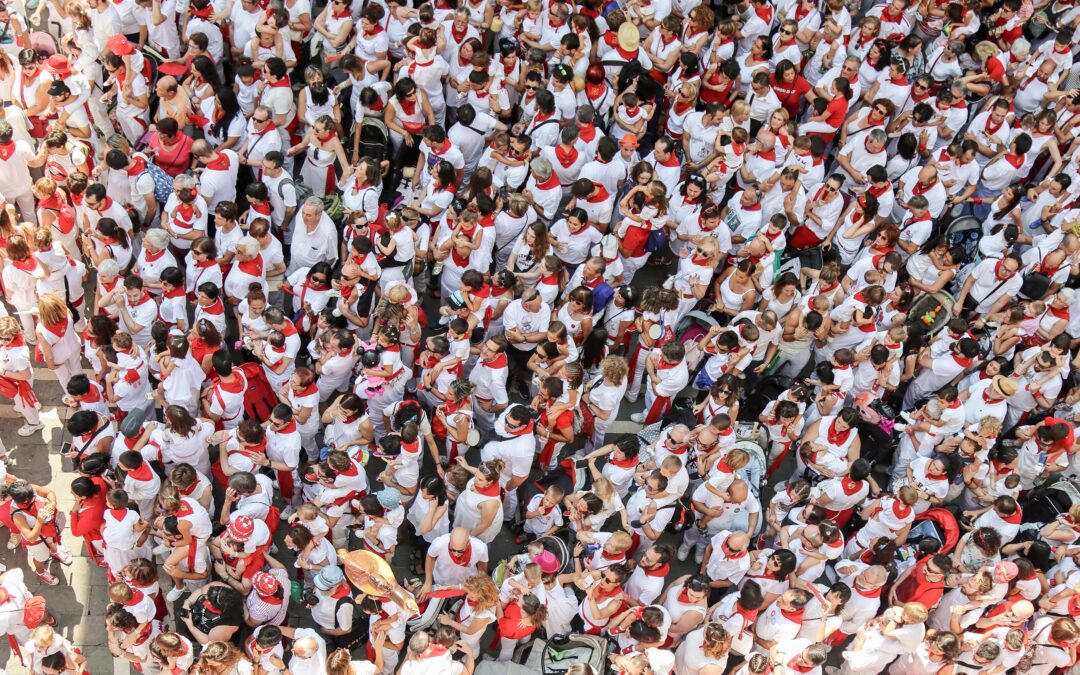
Signs of Deity
How many of us are born blind?
(John 6:1-14; 9:1-34; 11:25-54; 1 Corinthians 1:26-29 )
Blog Oct. 6-12, 2024
Prepared by Richard A. Marin: <PresentTruthLRI@gmail.com>
REVIEW: John gives seven signs showing that Jesus is the Son of God, the Savior of the world. In each of the first three, faith in Jesus as God’s promised Messiah is the result. And that is precisely the result that John hopes these stories will inspire in us.
The Promised Prophet
1. What term does John use to point to Jesus’ divinity in the first two chapter of his gospel? After clearly stating that Jesus was God in his first sentence, John points to Jesus’ equality with God the Father by referring to his divine “glory,” which was also manifest by changing the water into wine (John 1:1, 14; 2:11; Psa. 19:1; Eze. 8:4; Luke 2:14; Acts 7:2).
2. When Jesus told the Jews that God was his Father, were they correct in understanding that he was claiming to be equal with God the Father? Yes, for a son is everything the father makes him to be (John 5:17-18; Isa. 9:6; Luke 1:32; 2 Pet. 1:17).
3. Who was the fulfillment of God’s promise that he would send another prophet like Moses to whom his people were to listen? Jesus was the fulfillment of God’s promise to Moses for God told his disciples to “hear him” (Deut. 18:15; Matt. 17:5; Acts 3:22).
4. When Jesus fed the five thousand with only five loaves and two fishes, to what conclusion did the people come? The people concluded that Jesus was the fulfillment of the promise made to Moses of another prophet, for they were reminded of the manna that God sent from heaven under Moses’ administration (John 6:1-14).
5. How did the people that were fed react to the feeding of the five thousand? They saw in Jesus a great deliverer like Moses & attempted to crown him their king by force. Later Jesus told them that they sought him not because they believed he was God as shown by the miracle but because their bellies were filled with food (John 6:26).
6. What did Jesus point to as the true bread that would produce eternal life, not just temporal life? Jesus told the people that his flesh, his sinless life, must be taken by faith, for that would result in eternal life (John 6:27-51).
The Blind Shall See
7. What is the source of all disease? Disease entered this world as the result of Adam’s sin & is increased because of our parent’s sins & our own sins (Rom. 5:12, John 5:14).
8. In John 9 why did Jesus say that neither the blind man nor his parents had sinned? Scripture is clear that all have sinned & continue to fall short of God’s ideal, but Jesus was trying to point his disciples away from seeking to blame someone for the blind man’s condition & to God’s ability to cure even congenital blindness (John 9:1-5).
9. How many of us were born blind? Every human being, except Jesus, is born blind to the light of the Gospel in the face of Jesus. We were all born sinners, condemned to eternal death, without God, & without hope in this world (John 9:4-5; Psa. 51:5; 58:3; Rom. 5:12, 18, 19; Eph. 2:11-12).
10. What hope is there for human beings that are born spiritually blind? Our only hope is in the mercy of God that sent his Son to be the light of the world that lightens everyone who comes into the world (John 1:9; 3:16; Rom. 11:32; 12:3; 2 Cor. 4:6).
11. What should we learn from Jesus’ use of clay to heal the blind man’s vision? By using clay, Jesus reminds us that we were made from clay in the beginning & that it is appropriate to employ simple natural remedies to cure diseases (John 9:6-7; 2 Kings 20:7).
The Dead Shall Live
12. When Jesus told Martha, “I am the resurrection, and the life,” what was he claiming? Jesus was stating that he was eternal God (even while there on earth) & had the power to create & resurrect life (John 11:25; 10:18; Ex. 3:14).
13. What should we understand from Jesus’ statements using the phrase “I am”? Already John has quoted five “I am” statements by Jesus & two more follow later in his gospel. They are meant to tell us that Jesus always existed, for he was, & is, & will be. There was never a time when he was not fully God (John 6:35; 8:12, 58; 10:7, 9; 10:11, 14; 14:6; 15:1, 5; Psa. 41:13; 90:2; Mic. 5:2).
14. What did Jesus tell Martha that she would see if she believed? Jesus told her that she would see the glory of God. In other words, she would see in him the God of glory (John 11:40; Acts 7:2).
15. What was the result of Jesus’ raising of Lazarus? Many of the Jews believed on him but some told the Pharisees who feared that soon everyone would believe in Jesus (John 11:45-47).
16. What did the Pharisees think would happen if they did nothing to stop Jesus? The Pharisees believed that if they didn’t stop Jesus the Romans would come & take away their temple & their nation (John 11:48).
17. How did Caiphas’ solution to the Jesus problem predict the salvation of sinners? Caiphas suggested that it was better for one man to die for the people rather than that all the people die & that is exactly what Jesus did as the Federal Head & Representative of the human race so that all those found in him should not perish (John 11:49-52; Isa. 49:6; 2 Cor. 5:21).
18. What Christian beliefs are today considered foolish? The idea that one man could redeem the entire human race, the belief that Jesus resurrected himself, & the conviction that there is a glorious future life for believers are considered foolish by the world today. The Jews in Christ’s day considered it foolish that Jesus claimed to be God eternal (John 8:51-52; 11:53; Acts 26:22-25; 1 Cor. 1:26-29).

